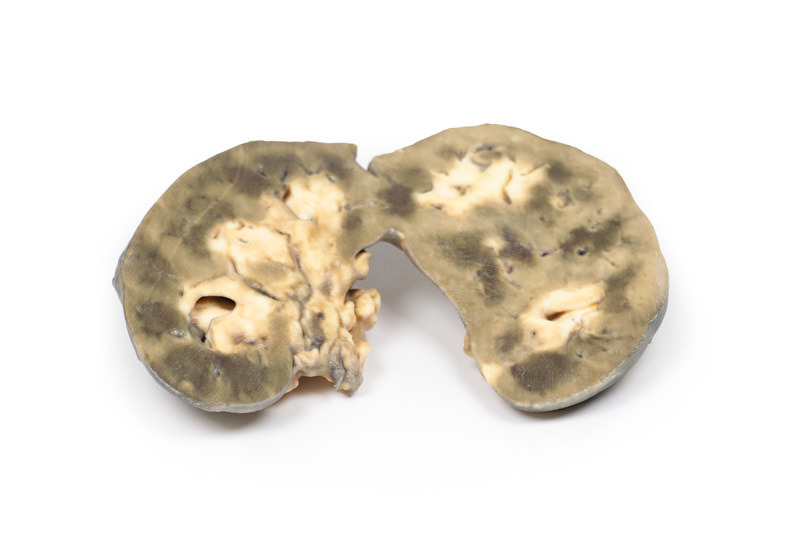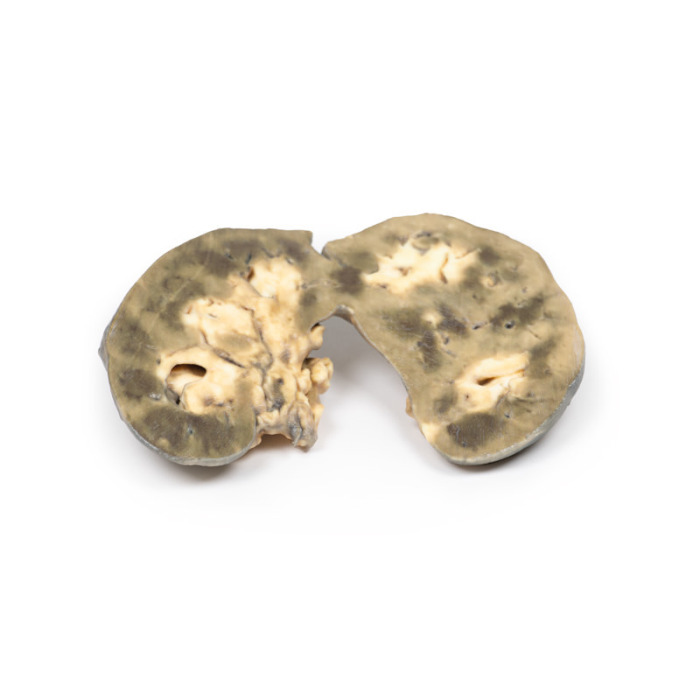MP2092 - Horseshoe Kidney
By buying you get
203 Points
More than a purchase. You get service and expert advice. Ask which products and combinations are recommended for you.
Clinical History
This specimen was found during a routine post-mortem of a 56-year-old male who died of rheumatic heart disease.
Pathology
The kidney is 12 cm in length and the two parts are fused at the lower pole forming this horseshoe-like shape. The ureters can be seen emerging from the hilum on the anterior aspect of the 3D print. The kidney is bisected in the horizontal plane which is evident on the posterior aspect. There is persistent foetal lobulation. The renal pelvis is characteristically antero-medial positioned with the ureters travelling anterior to the fused lower poles or isthmus of the kidney.
Further Information
Horseshoe kidneys are the commonest renal developmental abnormality. This anomaly is twice as common in males as in females. They are found in about 1 in 500 to 1000 post-mortem examinations. Most cases are sporadic but may be associated with some chromosomal anomalies, such as those resulting in Downs and Edwards Syndromes as well as non-aneuploidic anomalies, such as VACTERL* association. In 90% of cases an isthmus of renal tissue connects the lower poles of the kidneys across the midline, forming a horseshoe shape. Fusion of the upper lobes is rare. The renal pelves that drain the two halves of the horseshoe kidney are directed more anteriorly than normal and there is some angulation of ureters as they cross the isthmus.
This malformation is usually asymptomatic and picked up incidentally on routine ultrasound or CT scans. These kidneys usually function normally. There is an increased incidence of urinary calculi, possibly due to angulation of the ureters and to the resulting stasis. There is an increased risk of hydronephrosis usually from pelvi-ureteric junction obstruction. There is a higher incidence of urinary tract infections mainly due to vesico-ureteric reflux. A higher incidence in some forms of renal malignancies (e.g. transitional cell carcinoma and Wilms tumours) has also been described. (*VACTERL = Vertebral defects, Anal atresia, Cardiac defects, Tracheo-Esophageal fistula, Renal anomalies, and Limb abnormalities).
- Quantitative unit
- ks

MP2092 - Horseshoe Kidney









